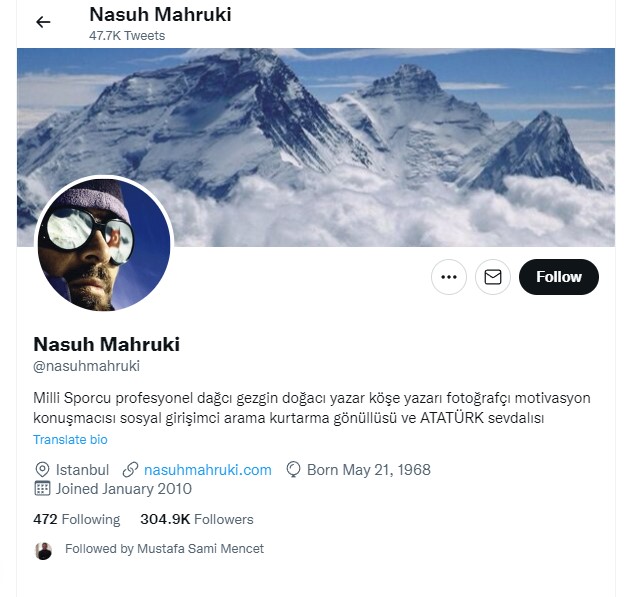
Why Your Halal Brand Needs Influencers
According to Influencer Marketing Hub, influencer marketing is getting broader each day,
“…new influencer categories like financial influencers (finfluencers), skincare influencers (skinfluencers), and pet influencers (petfluencers) are emerging.”
Moreover,
“…influencers begin to venture into other categories outside their original niche. For instance, beauty influencers have also covered other areas of interest, like travel, food, and fitness.”
So, why is this a good thing? Well, if you are targeting Muslim customers, there is a chance you have a niche product and may feel that there are not enough influencers that match what you are selling or offering as a service. Knowing about this trend changes everything for you.
In the same article, “Key Influencer Marketing Statistics You Need to Know for 2022” Jacinda Santora of Influencer Marketing Hub explains that:
“60% of marketers shared that influencer-generated content performs better and drives more engagement compared to branded posts”. She adds that by 2023 “influencer marketing expenditure is projected to reach $4.6 billion in the US alone.”
The Problem with Finding Influencers
Although you already know that influencer marketing is a big thing, what many marketers and business owners struggle with is finding the right type of influencer.
No one explains this issue better than Neal Schaffer:
“On the surface, influencer marketing seems simple enough. Find an online influencer, pay them some money, and watch them drive new faces to your product. The truth is that not just anybody can sell your product. You could back the Brinks truck into LeBron James’s driveway and offer him the world to push your product to his 40.7 million Instagram followers. But if it’s not something his followers would be interested in, it’s a massive waste of money.” You can read more about this in his article, “7 Tips and 12 Tools to Find Influencers for Your Brand”.
Know Which Type of Influencers You are Looking For
Size matters when it comes to choosing the right influencer but not how one might expect. You need to know where to find the right balance between influencer follower size and engagement for your halal business.
Influencer Type by Size
Mega-influencers – 1 million+ followers
Mega-influencers have a large following and a great reach on social media thanks to their A-list celebrity status. However, they will offer you very low engagement. Studies have found that the rate of engagement decreases as the influencer’s total follower count rises.
Macro-influencers – 50K to 500K followers
B-list celebrities (actors, athletes, etc. who are not at the very top) or even C-list (famous for being famous, reality show stars, etc.) can leverage their reputation to help you gain followers. These can also be thought leaders with professional-style content. They have a very high price tag and may give your halal brand engagement that is just slightly better than that of mega-influencers.
Mid-tier Influencers – 50K to 500K followers
These are a powerful group of content creators who enjoy being trusted by their followers. You will get a wide reach and more engagement than with the first two categories. They have spent years getting to where they are with their audiences and are very experienced in delivering the right content.
Micro-influencers – 10K to 50K followers
This category of influencers is probably the most suited for your small or medium-sized halal business. Micro-influencers are more niche-focused and have established an intimate connection with their followers. Lesley Vos, for the Association of National Advertisers, mentioned that 82% of consumers buy products recommended by micro-influencers.
Nano-influencers – 1K to 10K followers
We would recommend nano-influencers if you are looking for strategic partners to grow together. Nano-influencers usually have a modest reach which is narrowed down to a certain niche. If your brand is in its infancy or has limited resources, nano-influencers offer an affordable alternative. However, the relationships you build over the years are priceless.
Influencer Type by Occupation
This is not an exhaustive list; also, remember what we said about new influencer categories popping up every day and how influencers are starting to explore possibilities outside their niche. We will also skip the obvious types of influencers like beauty, fashion, and travel to show you how broad the possibilities are.
Gamers
Gamers who live stream their games on platforms like Twitch or YouTube can garner millions of followers who are interested in learning more about gaming or improving their own gameplay.
Meet Yusha Eans:
Instagram mid-tire influencer with 97.7k followers and YouTube micro-influencer with 26.1k followers.
Photographers
The biggest camera companies tend to partner with the photography influencers in the mega-through micro-influencer categories to promote their cameras, lenses, and other accessories. They are among the best content creators in the industry.
Meet Amir Ahmadpour:
Instagram micro-influencer with 36.4k followers.

Parenting
A parenting influencer provides tips and tricks for new parents, reviews products, and shares their own failures and successes as parents. A wide range of products can be promoted by parenting influencers.
Meet Zuliat Lawal:
Instagram micro-influencer with 22.4k followers and a nano-influencer on YouTube with 1.54k followers.
Niche Sports
Niche sports influencers like skateboarders, arm wrestlers, free runners, and the likes, garner a lot of attention and followers. For Muslim audiences, being represented in these niches yet popular activities is really “awesome”! As a Muslim brand, it would be ideal to partner with such influencers.
Meet Ali Nasuh Mahruki:
Muslim mountain climber and macro-influencer on Twitter and Instagram with 304.9k and 343k followers respectively.

Fake Influencers
These fake accounts pay for more followers and engagement so they look like they’re influential. Some of them are easy to spot, but others require a bit more discernment.
Remember to take a close look at the following to spot any suspicious characteristics:
- Engagement rate
- Quality of comments
- Engagement with audiences
- Quality of followers
- Who they’re following
How to Find Muslim Influencers for Your Brand
Where to Look
Hashtags: Find trending hashtags relevant to your brand and reach out to influencers using them via Instagram direct message.
Influencer Marketing Platforms: Muslim influencer marketing platforms like M.I.N allow you to explore Muslim influencers in specified niches.
Social Media: Search for specific niche influencers in the search bar such as “Fashion Influencer,” or “Tech Influencer,” which can help you find influencers for your halal brand.
Google: Google search is a vital tool for finding the right influencers, you can even come across ready-made lists of influencers in particular industries. Try searching ‘Best Muslim Fashion influencers,’ for example and there will be sites that have already created a list of them for you.
What to Look For
Meaningful Content: Look beyond follower size, and research the actual content an influencer is sharing. Check out the feeds of each influencer to see the kinds of messages they send and the causes they support.
Authority: Examine their level of familiarity and authority with the topics your brand cares about. Is their expertise apparent in their comments on the topics that matter most to your industry?
Relevant Engagement: An influencer may have a very high engagement for certain types of content they put out. However, look for content that is relevant to your brand, and if those types of posts get high engagement too.
Audience Overlap: You really need to examine the audience that the influencer engages with. There should be proper overlap and similarities between your brand’s audience and theirs. Otherwise, it won’t be of any use when it comes to creating awareness or generating demand for your product.
What to Do Next
Get Noticed: Engage with Muslim influencers on social media platforms. Comment on their posts, share their content and acknowledge their work. By doing so, you will attract their attention. Then you will be able to approach these influencers more effectively.
Approach: Now that you’ve got the influencer’s attention, send them a proposal that will earn them your business. The basic things to mention are:
- About you and how you got to know them
- The reason for reaching out
- The win-win opportunity you are offering
- The next steps they can take if they are onboard
Follow Up: Considering the high volume of messages influencers receive, your email may pass unnoticed. If you don’t hear from them after a few days, send a follow-up email. Send at least a few follow-up emails before moving on. Don’t forget to nurture your influencer relationships after your collaboration ends. It is just as important to manage your relationships with influencers, as it will benefit you in the long run.
Conclusion
As you can see from the article, getting the right type of influencers for your business is not a straightforward thing. Being a halal business or brand adds an extra layer of complication. However, considering that not many halal businesses and brands in your niche are currently doing influencer marketing with proper due diligence, you may see this as an opportunity.
Follow the tips and advice from this article and if you have any questions feel free to contact Muslim Ad Network.
start targeting muslim consumers